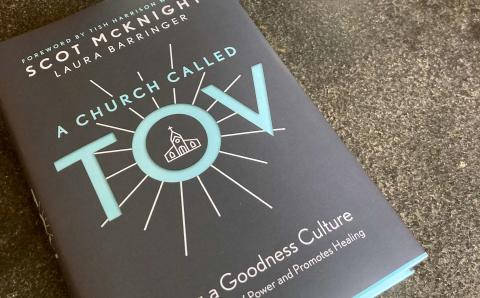The year 2020 was a hard one for Americans and Canadians across the continent, and I’ve been reflecting on how North Americans have individually and communally been struggling to understand the problem of trauma. As a counselor, I’m equipped to help clients, Christian or not, process trauma. However, I’m acutely aware that emotional healing is incomplete apart from spiritual healing. I believe America is struggling to understand trauma primarily because the gospel is not widely understood as a crucial part of the solution. For many people, trauma processing happens most effectively in a counseling context, but holistic trauma healing must rest on the foundation of the gospel.
Trauma
What is trauma? Trauma, as it is often understood, can be an emotionally intense experience that floods a person’s brain with fear-activated impulses, overwhelming the mind’s ability to process and understand the event. Another way to look at trauma is the disruption of attachment. This can involve chronic or acute betrayal of a relationship, often in a formative or emotionally significant context (e.g., childhood, a marriage, or a close friendship). Trauma, whether acute or chronic, can create lasting struggles such as hypervigilance, emotional volatility or numbness, depression, relationship struggles, and a host of other challenges.
Unhealed trauma tends to obscure reality in the domains of life affected by the traumatic experiences. It is a blurry and broken lens through which to view relationships, community, and the world. A person suffering with trauma may constantly feel unsafe in the absence of danger and may experience intense emotional pain, which could be disproportionate to the immediate context or triggering situation.
Trauma is difficult to understand from an outside perspective, so empathy is essential. Empathy is, in fact, a part of the healing process. Counselors often learn that emotional healing from trauma requires several crucial elements: the presence of a safe person who offers consistent and unconditional care, the openness to directly face and understand the reality of what has happened, and insight into one’s true significance and identity.
Here’s an example of how these dynamics might play out in counseling. Having left an abusive relationship involving emotional manipulation and several physical assaults, Tricia* struggles with flashbacks, constant anxiety, and fear of vulnerability. She avoids dating and shuts down when men seem kind and attentive, since the abuser was initially charming and romantic. Tricia begins to meet with a female counselor, but she finds herself worrying that the counselor will think she has been naive and is “crazy” due to flashbacks and severe anxiety. However, the counselor shows consistency and warmth, so Tricia gradually begins to share feelings and thoughts that seem shameful or frightening to her. This allows her to acknowledge the reality of the abuse (including incidents she’s afraid to think about), identify the abuser’s sin, and grapple with regrets about how she wishes she had responded. Along the way, the counselor asks questions to help Tricia notice how her feelings of identity and worth have been derailed by the abuser’s manipulation. They review Scripture together to reinforce Tricia’s awareness that she is a beloved child of God whose worth is defined by her heavenly Father. As the counseling progresses, Tricia finds that her anxiety and shame are being replaced by hope and confidence.
The Gospel as It Relates to Trauma
Through a gospel lens, trauma is integrally related to sin. We could understand original sin as a form of relational trauma that began with Adam and Eve breaking their relationship with God, then continued through generational cycles of broken relationships—with God and with each other. This means we are all touched by the traumatic effects of sin, including not only our own sin but also the sin of everyone who has ever hurt us, along with the sin of everyone who has hurt those who hurt us, and so on.
Viewing trauma as the outgrowth of sin is the only way we can truly make sense of the way trauma begets trauma and violence begets violence. It is usually out of insecurity, anger, sadness, or fear that people hurt each other, often after having been hurt by others. People who abuse others have often been the victims of abuse. The world struggles to understand this, wanting to group everyone into categories as victims or victimizers. From a gospel perspective, we are all traumatized by sin, having been harmed by others and doing harm to others.
Here I’ll return to the three components of trauma healing that I mentioned earlier. These components have been identified in many secular trauma counseling models. The presence of a safe person offering consistent, unconditional care is the starting point allowing the other two components to unfold. Counselors are trained in providing an emotionally safe and caring environment for trauma healing. And throughout Scripture we see that church communities, spouses, family members, and friends are called to build caring relationships that create opportunities for healing. Ultimately, though, spiritual healing comes through the presence of unconditional love. People can try to provide that—human relationships and wise counseling might be vital parts of the healing process—but human love will always be limited and flawed due to the ongoing influence of sin. True spiritual healing of trauma and sin is found through the presence and unconditional love of God.
The next component in trauma healing is an openness to understand and face the reality of what has happened. From a gospel perspective, this means acknowledging the reality of sin—including sin of others and one’s own sin. This is significant because healing does not require us to be innocent victims. A true understanding of sin allows each of us to acknowledge areas of our own sin as well as anyone’s sin against us. This frees us from the need to rationalize ways we might have contributed to our trauma or ways we have hurt others out of the pain of our own unhealed trauma. It is vital to process the story behind the trauma and identify false guilt, which is also common in trauma, but we need not be blameless to seek healing. God’s unconditional love allows us to openly acknowledge the reality of sin without fear of rejection.
The remaining component of trauma healing is insight into a true identity. We recognize that we are inherently significant, having been created in the image of God. With confession of sin and acceptance of Christ’s sacrifice on our behalf, we recognize that we are cleansed, worthy, pure, and spiritually whole. We are no longer defined by brokenness, wounds, or sin. Our identity is made new.
Spiritual healing allows us to have loving, sincere relationships with imperfect people. A few signs of spiritual healing are the fruits of the Spirit (Gal. 5:22-23) and the absence of bitterness, malice, slander, and rage (Eph. 4:31). Spiritual healing is an event (justification) and a process (sanctification). The indwelling Holy Spirit provides us with a clear lens through which to see and understand the world in place of the blurry, warped lens of trauma and sin.
North America is wrestling with the problem of trauma. The year 2020 has offered Christians an open door to speak the truth of the gospel.
*Tricia is not a real person, but her story is an amalgamation of stories I have come across in my counseling practice.
About the Author
Arielle Wellons is a Licensed Clinical Mental Health Counselor Associate in Gastonia, N.C. She grew up in the Christian Reformed Church and is now part of the Presbyterian Church in America along with her husband and son.








